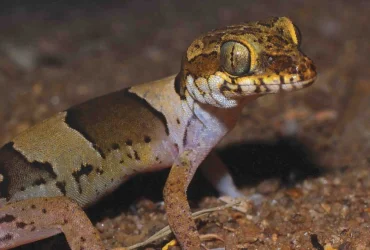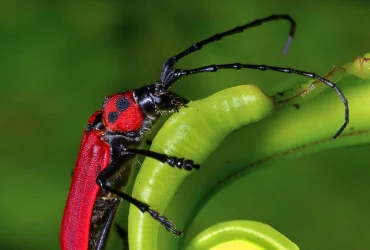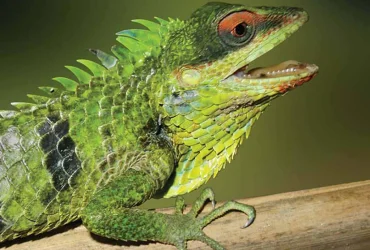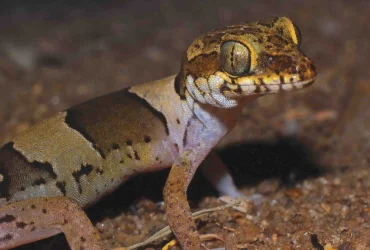Volume 1-8 (2009-16)
 v1i1.2
v1i1.2ISSN: 1800-427X (print)
eISSN: 1800-427X (online)
DOI:10.47605/tapro.v1i1.2
Submitted date: 20 January 2009
Accepted date: 27 January 2009
Published date: 06 April 2009
Pp. 2–15, pls. 1–4.
THE ORIGINAL DESCRIPTIONS AND FIGURES OF SRI LANKAN AGAMID LIZARDS (SQUAMATA : AGAMIDAE) OF THE 18TH AND 19TH CENTURIES
A.A. Thasun Amarasinghe*, Ulrich Manthey, Edi Stöckli, Ivan Ineich, Sven O Kullander, Franz Tiedemann, Colin McCarthy & Dinesh E. Gabadage
*Corresponding author. E-mail: thasun.taprobanica@gmail.com
Abstract
Eighteen species of agamid lizards are recognized from Sri Lanka, representing one subfamily: Draconinae. Thirteen of these species were described in the period 1758-1887. The early descriptions of agamid lizards were very brief and often written in languages other than English. Original descriptions and images of type specimens are provided for Calotes calotes (Linnaeus, 1758), C. versicolor (Daudin, 1802), C. nigrilabris Peters, 1860, C. liocephalus Günther, 1872, C. liolepis Boulenger, 1885, C. ceylonensis Müller, 1887, Otocryptis wiegmanni Wagler, 1830, Ceratophora stoddartii Gray, 1835, C. tennentii Günther, 1861, C. aspera Günther, 1864, Lyriocephalus scutatus (Linnaeus, 1758), Cophotis ceylanica Peters, 1861, and Sitana ponticeriana Cuvier, 1829. Translations to English are provided of original descriptions that were published in Latin, French, and German.
Key words : Agamidae, English translation, original description, Sri Lanka, taxonomy, type specimen
eISSN: 1800-427X (online)
DOI:10.47605/tapro.v1i1.2
Submitted date: 20 January 2009
Accepted date: 27 January 2009
Published date: 06 April 2009
Pp. 2–15, pls. 1–4.
THE ORIGINAL DESCRIPTIONS AND FIGURES OF SRI LANKAN AGAMID LIZARDS (SQUAMATA : AGAMIDAE) OF THE 18TH AND 19TH CENTURIES
A.A. Thasun Amarasinghe*, Ulrich Manthey, Edi Stöckli, Ivan Ineich, Sven O Kullander, Franz Tiedemann, Colin McCarthy & Dinesh E. Gabadage
*Corresponding author. E-mail: thasun.taprobanica@gmail.com
Abstract
Eighteen species of agamid lizards are recognized from Sri Lanka, representing one subfamily: Draconinae. Thirteen of these species were described in the period 1758-1887. The early descriptions of agamid lizards were very brief and often written in languages other than English. Original descriptions and images of type specimens are provided for Calotes calotes (Linnaeus, 1758), C. versicolor (Daudin, 1802), C. nigrilabris Peters, 1860, C. liocephalus Günther, 1872, C. liolepis Boulenger, 1885, C. ceylonensis Müller, 1887, Otocryptis wiegmanni Wagler, 1830, Ceratophora stoddartii Gray, 1835, C. tennentii Günther, 1861, C. aspera Günther, 1864, Lyriocephalus scutatus (Linnaeus, 1758), Cophotis ceylanica Peters, 1861, and Sitana ponticeriana Cuvier, 1829. Translations to English are provided of original descriptions that were published in Latin, French, and German.
Key words : Agamidae, English translation, original description, Sri Lanka, taxonomy, type specimen
 v5i1.83
v5i1.83ISSN: 1800-427X (print)
eISSN: 1800-427X (online)
DOI:10.47605/tapro.v5i1.83
Published date: 15 June 2013
Pp. 1–5
EDITORIAL : Wildlife Poaching Increasing
Lee E. Harding*
*Section Editor: Taprobanica, the journal of Asian Biodiversity
After decades of endangered species protection and conservation success, poachers are staging a come–back. Most people in Europe and North America just don’t believe that rhinoceros horn, monkey meat, tiger penis or bear bile have any curative or health properties, but millions of people in East Asia and Southeast Asia believe otherwise. This cultural predilection is driving extinction. As repugnant as it is to those living outside the range of non–human primates, monkey meat provides a much–needed source of protein in some circumstances—but not enough to justify their extinction. There is no such nutritional excuse for poaching tigers, bears or rhinoceros. Since the start of 2008, at least 1800 white rhinoceroses and a few of the rarer black rhinoceroses have been killed in South Africa for their horns, most smuggled into Vietnam and China.
eISSN: 1800-427X (online)
DOI:10.47605/tapro.v5i1.83
Published date: 15 June 2013
Pp. 1–5
EDITORIAL : Wildlife Poaching Increasing
Lee E. Harding*
*Section Editor: Taprobanica, the journal of Asian Biodiversity
After decades of endangered species protection and conservation success, poachers are staging a come–back. Most people in Europe and North America just don’t believe that rhinoceros horn, monkey meat, tiger penis or bear bile have any curative or health properties, but millions of people in East Asia and Southeast Asia believe otherwise. This cultural predilection is driving extinction. As repugnant as it is to those living outside the range of non–human primates, monkey meat provides a much–needed source of protein in some circumstances—but not enough to justify their extinction. There is no such nutritional excuse for poaching tigers, bears or rhinoceros. Since the start of 2008, at least 1800 white rhinoceroses and a few of the rarer black rhinoceroses have been killed in South Africa for their horns, most smuggled into Vietnam and China.
 v1i2.15
v1i2.15ISSN: 1800-427X (print)
eISSN: 1800-427X (online)
DOI:10.47605/tapro.v1i2.15
Submitted date: 30 October 2009
Accepted date: 22 November 2009
Published date: 22 November 2009
Pp. 83–106, pls. 1–4.
THE ORIGINAL DESCRIPTIONS AND FIGURES OF SRI LANKAN GEKKONID LIZARDS (SQUAMATA : GEKKONIDAE OF THE 18TH AND 19TH CENTURIES
A.A. Thasun Amarasinghe*, Aaron M. Bauer, Ivan Ineich, John Rudge, Mohomed M. Bahir & Dinesh E. Gabadage
*Corresponding author. E-mail: thasun.taprobanica@gmail.com
Abstract
Forty-two species/subspecies belonging to eight genera of geckos, family geckonidae, are recognized from Sri Lanka. Twenty of these were described in the period from Linnaeu’s 10th edition of Systema Nature 1758 to 1953. We provide the original text of the descriptions, images of the type specimens, and translations to English of eight descriptions that were written in Dutch, French, German, and Latin.
Key words : English translation, taxonomy, type specimen, Sri Lanka
Section Editor: Richard Wahlgren
eISSN: 1800-427X (online)
DOI:10.47605/tapro.v1i2.15
Submitted date: 30 October 2009
Accepted date: 22 November 2009
Published date: 22 November 2009
Pp. 83–106, pls. 1–4.
THE ORIGINAL DESCRIPTIONS AND FIGURES OF SRI LANKAN GEKKONID LIZARDS (SQUAMATA : GEKKONIDAE OF THE 18TH AND 19TH CENTURIES
A.A. Thasun Amarasinghe*, Aaron M. Bauer, Ivan Ineich, John Rudge, Mohomed M. Bahir & Dinesh E. Gabadage
*Corresponding author. E-mail: thasun.taprobanica@gmail.com
Abstract
Forty-two species/subspecies belonging to eight genera of geckos, family geckonidae, are recognized from Sri Lanka. Twenty of these were described in the period from Linnaeu’s 10th edition of Systema Nature 1758 to 1953. We provide the original text of the descriptions, images of the type specimens, and translations to English of eight descriptions that were written in Dutch, French, German, and Latin.
Key words : English translation, taxonomy, type specimen, Sri Lanka
Section Editor: Richard Wahlgren
 v1i1.1
v1i1.1ISSN: 1800-427X (print)
eISSN: 1800-427X (online)
DOI:10.47605/tapro.v1i1.1
Published date: 06 April 2009
Pp. 1
EDITORIAL : An Introduction to TAPROBANICA
A. A. Thasun Amarasinghe
Editor-in-chief: Taprobanica, the journal of Asian Biodiversity
Greek astronomer Ptolemy compiled a map in the 2nd century labeled the Island “Taprobane”. Arab seafarers called it “Serendib”. From the 1400s, Europeans identified that island as “Seylan”, which was later anglicized to “Ceylon”. In the 1500s Portugal and Spain established their dominance in the maritime trade of South and Southeast Asia. In the 1600s the Dutch emerged as the dominant colonial power in the region, followed in the 1700s by the British, then Independence Island after 1948 “Sri Lanka”. The island is situated in the Indian Ocean, south west of the Indian peninsula, between 79o 39’ and 81o 53’ Eastern longitudes and 5o 54’ and 9o 52’ Northern latitudes, and has a total land area of 65,610 km2. “Taprobane” was a historical name for Sri Lanka and we use the name “Taprobanica” for our society as well as for our journal. Taprobanica Nature Conservation Society (TNCS) is an independent, non-governmental, nonprofit oriented voluntary organization dedicated to promote research, public awareness and nature conservation and it was established in 2007.
eISSN: 1800-427X (online)
DOI:10.47605/tapro.v1i1.1
Published date: 06 April 2009
Pp. 1
EDITORIAL : An Introduction to TAPROBANICA
A. A. Thasun Amarasinghe
Editor-in-chief: Taprobanica, the journal of Asian Biodiversity
Greek astronomer Ptolemy compiled a map in the 2nd century labeled the Island “Taprobane”. Arab seafarers called it “Serendib”. From the 1400s, Europeans identified that island as “Seylan”, which was later anglicized to “Ceylon”. In the 1500s Portugal and Spain established their dominance in the maritime trade of South and Southeast Asia. In the 1600s the Dutch emerged as the dominant colonial power in the region, followed in the 1700s by the British, then Independence Island after 1948 “Sri Lanka”. The island is situated in the Indian Ocean, south west of the Indian peninsula, between 79o 39’ and 81o 53’ Eastern longitudes and 5o 54’ and 9o 52’ Northern latitudes, and has a total land area of 65,610 km2. “Taprobane” was a historical name for Sri Lanka and we use the name “Taprobanica” for our society as well as for our journal. Taprobanica Nature Conservation Society (TNCS) is an independent, non-governmental, nonprofit oriented voluntary organization dedicated to promote research, public awareness and nature conservation and it was established in 2007.
Hubungi Kami
The ultimate aim of the journal is to provide an effective medium for communication of the latest and best scientific information.
Copyright © 2020 Taprobanica. All Rights Reserved
Jasa Pembuatan Website by IKT




